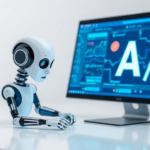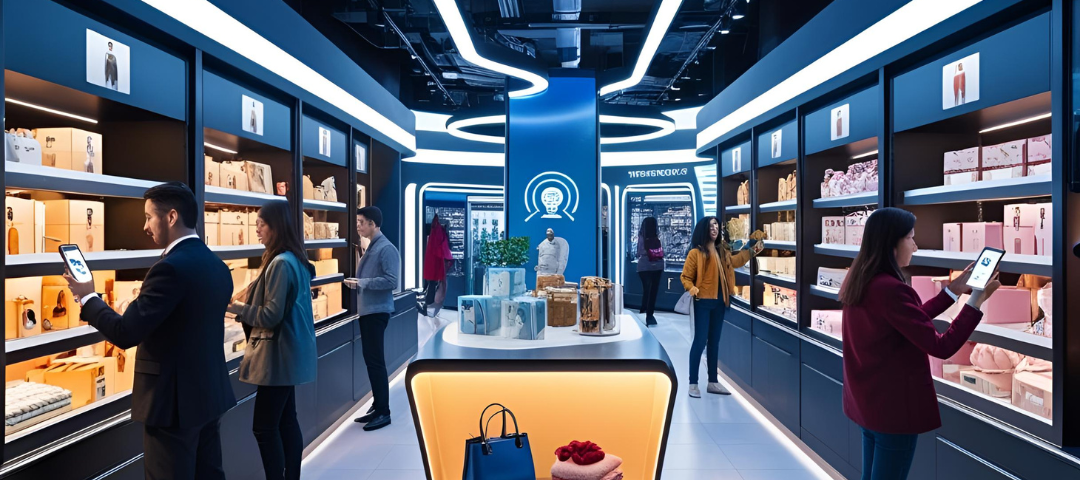
How AI Helps in Managing Brand Reputation Online
March 13, 2025
Using AI for A/B Testing and Experimentation
March 14, 2025Artificial Intelligence (AI) has significantly changed the way businesses interact with consumers. One of the most powerful applications of AI in marketing is image recognition, which enables companies to analyze visual content and tailor their marketing efforts to individual customer preferences. From detecting objects and faces to analyzing emotions and brand logos, AI-driven image recognition provides valuable insights that help businesses create highly personalized marketing campaigns. This technology allows brands to understand customer behavior, deliver targeted advertisements, and improve the overall shopping experience.
In this article, we will explore how AI-driven image recognition works, its benefits, real-world applications, and how businesses across different industries are using it to enhance their marketing strategies.

Understanding AI-Driven Image Recognition
AI-driven image recognition refers to the ability of machines to identify, analyze, and interpret visual data using deep learning and computer vision technologies. By processing vast amounts of images, AI systems can detect patterns, recognize objects, and even understand emotions based on facial expressions.
The core technologies behind image recognition include:
- Machine Learning (ML): AI models are trained on large datasets of images to learn patterns and make predictions.
- Deep Learning (DL): Neural networks, especially convolutional neural networks (CNNs), help AI systems analyze and classify images with high accuracy.
- Computer Vision: A branch of AI that enables computers to “see” and interpret images similar to how humans do.
Over the years, AI-driven image recognition has evolved, allowing businesses to leverage this technology for enhanced customer experiences and better marketing decision-making.

How Image Recognition is Used in Personalized Marketing
AI image recognition helps marketers gain deep insights into consumer behavior by analyzing visual content from social media, online searches, and even in-store surveillance. Here are some of the ways businesses use this technology to create personalized marketing strategies:
- Identifying Consumer Preferences: By analyzing images shared by users on platforms like Instagram, Pinterest, and TikTok, AI can determine customer preferences, such as fashion styles, favorite brands, or food choices.
- Enhancing Customer Experience: Retailers use AI to recognize customers in-store and offer personalized shopping experiences based on past purchases and preferences.
- Real-World Examples:
- Pinterest Lens allows users to take photos of objects and receive visually similar product recommendations.
- Amazon and eBay’s visual search tools let customers upload pictures to find matching products in their catalogs.
By analyzing images instead of relying solely on text-based searches, businesses can deliver highly relevant content to consumers, improving engagement and sales.

Benefits of AI-Driven Image Recognition for Marketing
Implementing AI-driven image recognition in marketing provides multiple advantages:
- Improved Customer Engagement: Personalization based on visual data makes advertisements more relevant to consumers, increasing interaction rates.
- More Targeted Advertising Campaigns: AI identifies key visual trends, allowing marketers to craft highly targeted ads that align with consumer preferences.
- Higher Conversion Rates and ROI: Since personalized recommendations are more relevant, customers are more likely to make purchases, boosting sales and return on investment.
For example, Coca-Cola uses image recognition to analyze photos shared online, identifying when and where their products are consumed, helping them improve brand engagement strategies.

AI-Powered Image Recognition Technologies in Use
Several AI-powered tools and platforms help businesses integrate image recognition into their marketing strategies. Some of the most widely used technologies include:
- Google Vision AI: Analyzes images to recognize objects, faces, and logos, providing deep insights into customer preferences.
- Amazon Rekognition: Uses deep learning to analyze images and videos for object detection, facial recognition, and sentiment analysis.
- Microsoft Azure Computer Vision: Provides image tagging, OCR (Optical Character Recognition), and content moderation for businesses.
- Emerging Startups: New companies are developing innovative image recognition solutions that cater to niche markets, enhancing personalized marketing.
These tools help businesses automate processes, gain customer insights, and create more personalized marketing campaigns.

Consumer Behavior Insights from AI Image Analysis
AI-driven image analysis provides valuable insights into consumer behavior, helping brands refine their marketing strategies. Here’s how:
- Understanding Purchase Intent: AI detects patterns in user-generated images, identifying what products consumers are interested in and likely to buy.
- Identifying Trends from Social Media: AI scans platforms like Instagram and Facebook to recognize trending fashion styles, gadgets, and consumer preferences.
- Predictive Analytics for Marketing: By analyzing past visual data, AI can predict what products or trends will be popular in the future, helping brands prepare targeted campaigns.
For example, a fashion brand might analyze millions of streetwear images on social media to determine the next big trend and adjust their product lineup accordingly.

Applications of AI Image Recognition in Different Industries
AI-driven image recognition is used across various industries to enhance marketing strategies and customer engagement. Some key sectors benefiting from this technology include:
- Fashion and Retail: AI helps recommend outfits based on user-uploaded images, creating a personalized shopping experience.
- E-commerce: Visual search tools allow consumers to find products by uploading photos, improving convenience and user satisfaction.
- Hospitality and Tourism: AI can analyze travel photos to offer personalized destination recommendations and travel deals.
- Food and Beverage: Restaurants use AI to analyze customer food preferences and create customized menu recommendations.
For example, McDonald’s uses AI image recognition in its digital menu boards to suggest items based on the time of day, weather, and customer demographics.
Conclusion
AI-driven image recognition is transforming personalized marketing by helping brands analyze consumer preferences, deliver highly targeted advertisements, and enhance customer experiences. Businesses that embrace this technology gain a competitive advantage by offering more relevant content and improving engagement.
As AI continues to advance, image recognition will become even more sophisticated, allowing marketers to refine their strategies further. By leveraging AI-driven visual analysis, businesses can better understand their customers and create marketing campaigns that truly resonate with their audience.


